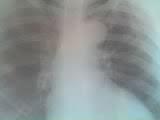




This article has been published in the 2010 IGCS biennual meeting held in Prague/Czech Republic:
Capacity of health professionals in cervical cancer screening in Goma/DRC
M. Kambale Sahani1,2, M.M. Mutumwa3, P.K. Mukama4
1Health Department, AGIR ENSEMBLE, 2Virunga General Hospital-GOMA, 3Clinic Chaine de l'Espoire-GOMA, 4Centre Medical Belle vue, GOMA, The Democratic Republic of the Congo
Overview
Cancer is now the leading cause of death worldwide, 28 million of people live with cancer in the world and 8 million die each year by the disease. In DRC, cancer killed approximately 33,000 people in 2005 and cervical cancer was the killer no 1 among women and prostate cancer among men. If nothing is done now, this figure will reach 65,000 in 2030. Source: WHO infobase
In DRC no woman has access to cervical cancer screening in all the life (service not available in all the country, a country of more than 70,000,000 people).
Objectives
This research project aims to know the degree of understanding and competency of health professionals (doctors and nurses) in screening methods (VIA and VILI) to make sure that the screening can be initiated without any difficulty in the city of Goma and, if there are difficulties, how they can be solved to this services being accessible to people. To measure also their capacity of using cryotherapy for treatment of precancerous lesions.
Method
We used the STEPS Method of the WHO, especially Step 1 using questionnaire and interview of 50 doctors (general practitioners) and 500 nurses in the city of Goma. Sample was constituted from all public and private hospitals and health centers of the city. We used comparative statistic test among people who know the method and those who don’t know it.
Hypothesis
Our study was focused on the following hypothesis:
- Health professionals know well the usage of VIA and VILI methods,
- Health professionals usually educate their patients on prevention of cervical cancer,
- Health professionals know how to use cryotherapy to treat precancerous lesions.
Results
At the end of our study, we found that:
1. 85% of doctors (43) never understand about VIA and VILI methods and 98% of nurses (490) are too.
2. 10% of doctors (5) have understood about the methods but don’t know how to proceed and 1% of nurses (5) are too.
3. 5% of doctors (3) know the substances used for VIA and for VILI but don’t know how they are used and 1% of nurses (5) are too.
4. 10% of doctors (5) give an education message to their patients (avoid genital infections) and 2% of nurses (10) do too.
5. 10% of doctors (5) are aware of HVP vaccine to prevent cervical cancer and no nurses (0) know that.
6. No health professional (doctors or nurses) knows that precancerous lesions can be treated and no one knows how to use cryotherapy.
7. No health professional (doctors or nurses) has participated in a campaign for cervical cancer prevention.
8. No health institution in Goma has a screening service.
Conclusions
Health professionals in the city of Goma don’t have sufficient skills in cervical cancer screening and HPV vaccine. This constitutes a need for training in this area and it is also a big challenge to the availability of the service.






















































































































Aucun commentaire:
Enregistrer un commentaire